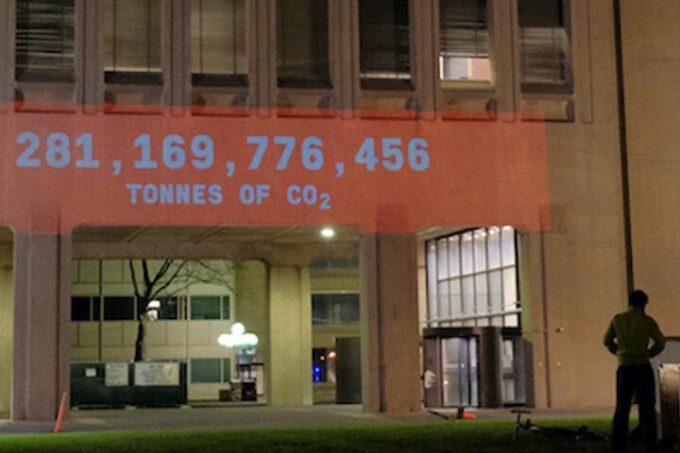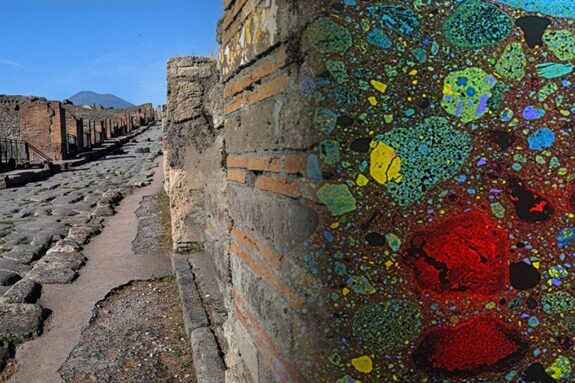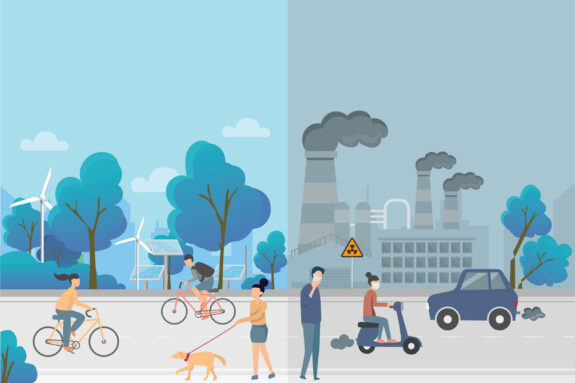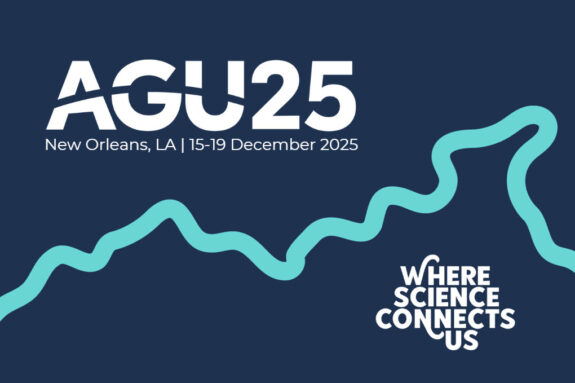MIT Climate Clock from D-Lab: Water, Climate Change, and Health

The MIT Climate Clock. Photo: Gaurav Patekar
Read this at the MIT D-Lab
The first U.S. university-based monumental climate clock installation has arrived, and MIT is its home! Kicking off at 5 pm on Earth Day, April 22, 2021, we began projecting vital information about the state of our planet – and the pathway to saving it – on the south side of the Green Building, MIT Building 54, every night from 5 pm to 5 am. The initial installation will last through April 30th.
Our Climate Clock displays four rows of text and numbers:
- The Goal – limit global temperature increase to 1.5°C (2.7°F)
- CO2 Emissions Budget (tonnes of CO2),
- Deadline – CO2 Budget Spent (at current rates),
- Lifeline % of World’s Energy from Renewable Energy.
Following the stricter of the two goals expressed in Article 2 of the Paris Climate Agreement, our goal is to limit global average temperature increase to 1.5°C (2.7°F). We don’t have a lot of time, or carbon left to burn, before that goal will become unreachable. That’s why we will display a “CO2 Emissions Budget” and a “Deadline.” The “CO2 Emissions Budget” represents how much carbon dioxide the world as a whole can release into the atmosphere to maintain at least a 66% change of avoiding global average temperature increases of 1.5°C (2.7°F). The “Deadline” is another way of expressing this budget: it’s the time we have left to take decisive action to limit global average temperature increase to 1.5°C. Credible current projections suggest we could have less than seven years.
Our point is not to spell doom; it’s to inspire action. Which is why we include a “Lifeline.” The “Lifeline” represents the percentage of the world’s energy that is currently provided through renewable sources. It’s currently at about 12.2%, and climbing.
Together, these numbers motivate us to do more – to raise awareness, to find solutions, to make our world more livable and more sustainable. The MIT community, whether it’s students, faculty, staff or alumni is already seeking ways to face the climate challenge. Our team created the MIT Climate Clock to signal the urgency of climate action to our community and beyond.
Video: Gaurav Patekar
How did we get here?
Eight months ago, in September 2020, artists Andrew Boyd and Gan Golan unveiled the first U.S.-based Climate Clock at “the Metronome,” a public art wall in New York City, on the south side of Union Square.
Six months prior to that NYC Climate Clock display, Susan Murcott, MIT D-iab lecturer, and a team of her students already had their own Climate Clock-esque plans in motion. During the spring 2020, in the D-Lab: Water, Climate Change and Health class, Susan started a project with the goal of displaying graphs of rising atmospheric carbon dioxide concentrations, such as the NOAA CO2 animation, on a tall MIT building. Susan didn’t know about the New York Climate Clock when she first devised the project; instead, she was inspired by the CITGO sign in Boston’s Kenmore Square – ironically, an advertisement for a 20th century petroleum powerhouse. Susan dreamed of creating a 21st century version of the CITGO sign – a highly visible installation at MIT that would inspire climate action.
The original team included two students from the D-Lab class: Gabriela Cazares (MIT’20, Course 5) and Alejandro Diaz (MIT’20, Course 6). Then, the COVID-19 pandemic struck. This could have sent the project into a nosedive, but instead, over the summer, the team grew, and Gabby and Alejandro developed the idea further, researching locations and projection options.
Jillian James, MIT ’10, ’16, Aero-Astro, who had previously worked as an EN-ROADs “Climate Ambassador” and facilitator in that D-Lab class, brought the Climate Clock concept to the team’s attention. On September 22, 2020, she wrote: “I saw this Climate Clock in NYC which draws interesting parallels to the Keeling Curve CITGO Sign concept.”
And, Alejandro replied, “Their project is online for people to recreate, and I’m sure I could make a small one fairly easily following their instructions. Alejandro studied up on “how to make a climate clock” from the climateclock.world website, following the code provided on their widget and added that to his website.
Meanwhile, Lowry Yankwich, another student from the spring 2020 class, and a 3rd year Harvard Law student, joined the team and, finding a niche where he could help, spent time during the fall writing an article featured on climate.mit.edu to help build momentum and excitement for the project.
Then, Gaurav Patekar, a graduate student, computer scientist and sculptor working on a Master’s thesis at the MIT Media Lab on “creating objects and experiences to feel climate data” reached out to Susan in fall 2020 and shortly thereafter joined the MIT Climate Clock team.
In February 2021, still under COVID-19 restrictions, an expanded MIT student team formed in Susan’s and Julie Simpson’s D-Lab class. Now, the team included not just the original members, but also Gaurav Patekar and Jenning Chen (MIT ’21 Course 6). In addition, key leaders of MIT Alumni for Climate Action (MACA) endorsed the project and advocated to the MIT administration to support a Climate Clock installation, including Shiladitya DasSarma (MIT’84, Course 7) and Priya Giri (MIT’13, Sloan 15A). And, Jim Zaorski (MIT ’80, Course 2), an alumni donor, provided financial support to the Climate Clock team. With the addition of new team members, who brought new skills, and new technical and financial supporters in the alumni community, our team now had a clearer vision of its goal and was ripe for action!
By the time we got to spring, 2021, with several of our teammates graduating in June, our team felt an urgency to see the project to fruition. We set Earth Day, April 22nd as our goal for launching the first projection. And we set the last day of class, May 20th, as our “final” projection deadline, which we hoped would involve projecting the Climate Clock on an ongoing basis, until we avert the climate crisis or the clock runs to zero. We selected our target building, the iconic Green Building (Building 54), not only because it is the tallest, and most visible building in Cambridge, but also because the Green Building is home to the Institute’s Department of Earth, Atmospheric and Planetary Sciences. How perfect is that?
As a next step, Gaurav, Jenning and Susan wrote emails in late March to numerous MIT administration, faculty, student and staff climate leaders to gain support for the project.
Concurrently, our student team was working feverishly on creating the content for the Climate Clock projection. Jenning Chen (MIT ’21 Course 6) worked on the actual projections, together with Gaurav and Alejandro. Meanwhile, Alejandro and Gaurav researched the projectors and lenses needed to achieve the projection we intended. After finding that the specifications we needed demanded a very expensive projector, we reached out to MIT Audio Visual, including Robert Shea and Tara Walsh, to see if they had what we were looking for. They did! In addition, they had a rental service that included technical support services, which proved invaluable. Our team expanded further, and gained an infusion of enthusiasm and energy from Robert and Tara.
Come April, we had reached a critical juncture; we knew what we wanted to do, we thought we could do it, but did we have permission? After three weeks of holding our breath, our team received the happy news that the MIT administration had approved our Climate Clock on a temporary basis, from April 22 to April 30. This would be followed by “additional discussions about conditions relating to design, positioning, etc. that could lead to longer term installation.” Our faces ~lit~ up – get it?
Next, Joe Higgins, VP of Campus Services and Stewardship, assigned to us an amazing team of “can-do” people from MIT Facilities, including Paul Murphy, Director, Special Projects, Campus Construction, Mike Smith, Project Manager, Campus Construction, and Sarah McDonald-Williams, Project Coordinator, Building 54 Renovation, all of whom were instrumental in turning our idea into a reality. Sarah bluntly summarized MIT Campus Construction’s function: “we make things happen!”
Within one day of receiving approval, a subgroup of this growing MIT community team effort met on the south side of the Green Building to hold a test projection. It was a mild spring day, daffodils and forsythia on campus just beginning to bloom – a promise of joyful things to come.
Immediately, we ran into problems. Gaurav and Alejandro had been our “boots on the ground,” scoping out, measuring and graphic-designing our plan, and they had identified a location in a particular window of a particular room on the top floor of Walker Memorial from which we could project. As it turned out, though, the distance between Walker Memorial and the Green Building was way too far. As MIT AV’s Robert Shea explained, we’d need a projector that cost about $100,000 to project from Walker Memorial.
Fortunately, Mike Smith intervened with an idea: a Campus Construction team could build a protective and secure enclosure (which Mike and Sarah called the “Dog House”) that would allow us to put the project outside, closer to the Green Building.
But then another problem surfaced: the Green Building was about to commence a 12-month major program of construction and refurbishment! Mike and Sarah made phone calls, and discovered that a 6-foot high perimeter fence might be going up next week, followed by machinery and a huge crane the following week. Scaffolding could be going up that would cover the south face of the Green Building as soon as on Earth Week!

Undaunted, Robert went ahead and set up the MIT AV projector on “the Dot,” the grass circle just south of the Green Building. Together with Alejandro and Gaurav, and with Mike pointing them to electrical power outlets in the vicinity, the team ran a test projection. Sadly, the daylight was overwhelming. Nothing was visible on the lower-most section of the Green Building. “You couldn’t see anything,” Gaurav announced sullenly.
Hearing of these obstacles, Susan began to worry that all was lost. She left “the Dot” after several hours of strategizing Plan Bs with the gathered team, and headed for her afternoon (virtual) class, unsure about the project’s next steps.
But Robert, Alejandro and Gaurav were unfazed, determined to try the projection again after dark, returning with the projector and powering on under clear night skies.

Waking up in the middle of the night, Susan checked her email to find a 1:00 am message from Alejandro. To her astonishment, a raft of vivid Climate Clock projection photos at all levels of the south face of the Green Building filled her inbox. Had we narrowly managed to land on Mars, she couldn’t have been happier!
Next morning, Susan got a call from Mike saying he had pulled together a crew to build the “Dog House.” Then a call with Sarah Williams, the Building 54 Project Renovation Coordinator, confirmed that they had a crew on standby waiting to start the Building 54 renovation. “We might as well put them to work on this project,” Sarah announced. Sarah had other good news: the renovation construction wouldn’t be starting until the Monday, May 3rd, after our approved projection window was over.

Why now?
The MIT Climate Clock’s timing not only coincides with the 51st anniversary of the first Earth Day, but also aligns with the Biden Administration’s “Leader’s Summit on Climate,” at which President Biden will announce new, ambitious 2030 emissions targets. At the summit, Biden will call on leaders from 40 countries to rachet up their commitments, known as nationally determined contributions (NDCs), in advance of the U.N. Climate Change Conference (COP26) in Glasgow, November 11, 2021. Both this Summit and COP 26 will seek to catalyze efforts to “keep that 1.5-degree goal within reach.”
Biden’s Summit coincides beautifully with our Climate Clock team’s own aspirations to catalyze the MIT community’s efforts to reach this near-impossible goal. “It’s our moonshot moment!” says our “A” team, Jenning, Alejandro and Gaurav, as they stay up late nights working both in and out of class on this project, applying their technical wizardry and mind, hand and heart magic.
So, although we didn’t know it would be this way when we started this project, the MIT Climate Clock effort is now aligned with the U.S.A.’s return to international leadership on climate change, its return to the Paris Agreement and, hopefully, its return to successful engagement with the global community regarding the state of our Earth.
This project has given us hope in a dark time. As Jenning declared while our team was putting together final touches in preparation for our Earth Day Climate Clock launch, “I am a senior living at home in South Carolina this term. All my classes are virtual. I am graduating in less than two months, after four years at MIT. Yet this is the best thing I have ever done at MIT.”
Special thanks to
- MIT Office of the V.P for Research
- Joe Higgins, VP for Campus Services and Stewardship
- Paul Murphy, Mike Smith & Sarah MacDonald-Williams, MIT Campus Construction
- Robert Shea and Tara Walsh, MIT Audio Visual
- Jim Zaorski, MIT ’80, Course 2, alumni donor to the Climate Clock team


